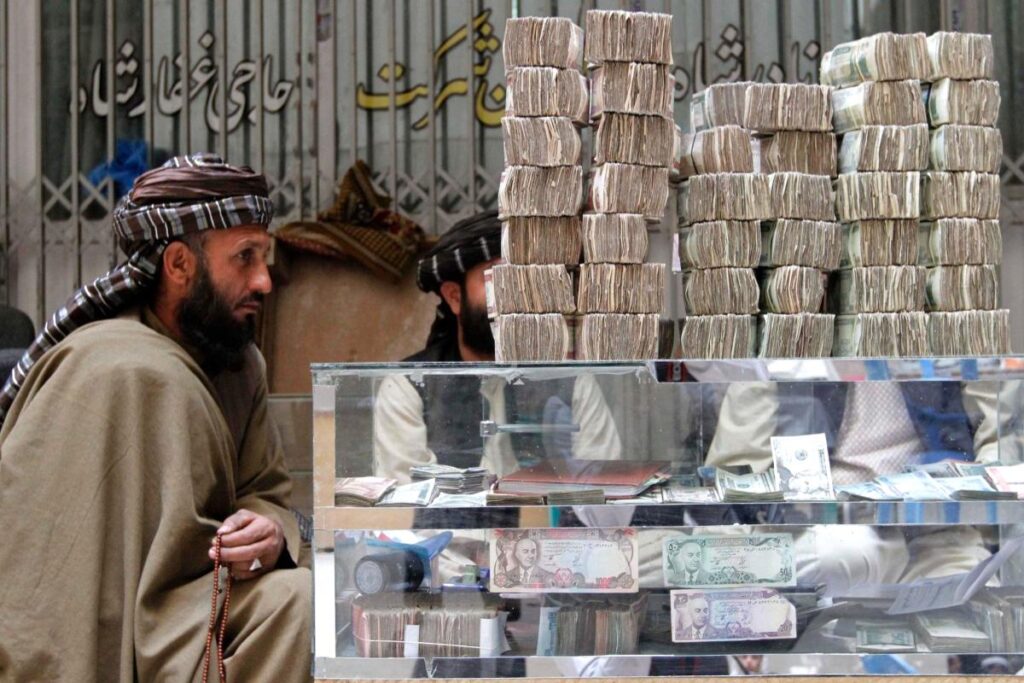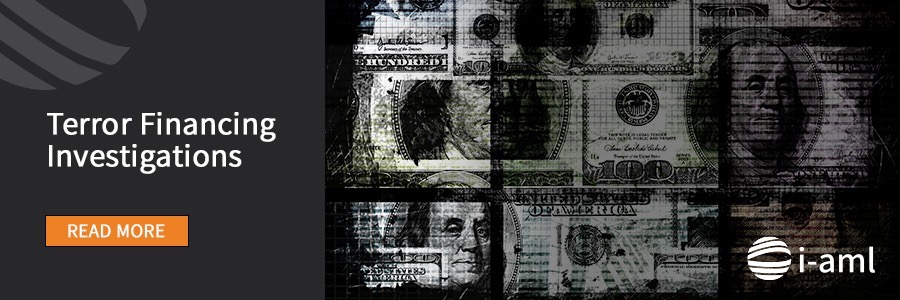The picture is just one of several images of United States $100 notes boxed, bagged, or bound in plastic, posted on Twitter by the Taliban-controlled central bank of Afghanistan in recent weeks. Da Afghanistan Bank said it had received three separate cash injections of $US40 million for “humanitarian aid”, on November 29, December 5 and December 6, and each delivery was passed to a commercial bank.
“Any principled action that leads to the transfer of reserves to the country and helps the needy people of the society, the Da Afghanistan Bank appreciates it, and this bank will continue its efforts in strengthening the banking sector,” the bank said.
The photos of the cash appear genuine but the ABC has been unable to independently verify them. The bank has not clarified where the cash is coming from, or what it meant by humanitarian aid, prompting concerns over financial transparency in Afghanistan.
So, why are such large sums of cash being sent to Afghanistan?
.
.
Where is the cash coming from?
The bank’s social media posts did not reference UN agencies, who have been importing large amounts of cash to Afghanistan for a year to keep essential humanitarian operations afloat.
The onset of winter will compound the acute humanitarian needs that half the country is already facing, aid agencies have warned.
Da Afghanistan Bank and the Taliban government have been contacted for comment, but the ABC has not received a response and cannot confirm if the money in the photos is UN money.
“What is very clear is that it is not clear where this cash is being shipped from,” said Dr Anas Iqtait.
Dr Iqtait, from the Centre of Arab and Islamic Studies at Australian National University, also said the piles of cash shown in the photos looked to be more than $US40 million.
“Especially on the runway, it may have been hundreds of millions of dollars,” he said.
Dr Iqtait questioned the purpose of the images, adding that the language in the tweet about what the money is for is “quite vague”.
“This is not money for humanitarian support, otherwise it would have gone through other destinations,” he said.
“Yes, the tweets say that, but … I think they are talking about how any humanitarian effort to support the Afghan people is welcome.”
Piles of cash in 100 dollar notes that appear to be US dollars.
The cash in the photos appears to be $US100 notes. (Twitter: Da Afghanistan Bank)
Dr Iqtait said in the past there have been governments that have “shown leniency towards the Taliban government” but declined to speculate as to which governments that could be.
“[They] could be injecting some cash to stabilise the central bank and this would not be unprecedented,” he said.
The social media posts come at a time when the US moved $US3.5 billion of Afghanistan reserve funds, which had been frozen, into a Swiss bank account as a fund to aid Afghan people.
“I highly doubt the cash shipments are coming from the trust,” Dr Iqtait said.
Creation of the new trust fund came after months of talks between US President Joe Biden’s administration, Switzerland, other parties and the Taliban, who demanded the return of $7 billion in Afghan central bank assets held in the United States.
Why are large sums of cash being flown into Afghanistan?
The banking system in Afghanistan has been largely unable to operate since the Taliban takeover in August 2021.
Banks in Afghanistan, including the central bank, were cut off from the international banking system SWIFT after the Taliban seized control of the government, which is now not recognised by any government in the world.
Afghanistan banks can’t interact with banks in other countries, and the Afghan diaspora cannot send money back home through banks.
It’s also incredibly difficult for people in Afghanistan to withdraw money from ATMs or banks, with long wait times and withdrawal limits.
“All of these money tools are non-existent in Afghanistan at the moment. Or they are severely limited,” said Dr Iqtait.
The Taliban government has not been formally recognised by any government in the world, partly because of its mistreatment of women.(Reuters: Zohra Bensemra)
The central bank holds reserves of hard currency, and there is a shortage of both US and Afghani cash in Afghanistan at the moment.
A combination of these factors means much of the day-to-day banking and basic payments in Afghanistan are happening in cash, which is not readily available from inside the country.
Also, as the formal banking sector struggles, an informal banking system known as “havala”, is again flourishing.
“The ‘havala’ is an old system of cash transfer, through personal off-grid individuals and companies, that has taken over the entire banking system,” said Sami Abdurahimzai.
Mr Abdurahimzai, a former senior public policy expert from Afghanistan who now lives in Melbourne, said this informal system was making the liquidity crisis worse.
“[This] results in capital flight from the country, illegally, hence making it even worse for the economy and the people,” he said.
The way out, Mr Abdurahimzai suggested, was to allow Afghanistan banks to operate internationally and earn back their lost legitimacy.
How does the UN import cash to Afghanistan?
A girl with orange hair stands among rubbish with bare feet. A boys is behind her, leaning against a motorbike.
Afghanistan is in the grips of a humanitarian crisis.(AP: Ebrahim Noroozi, file)
The UN has imported $US1.8 billion in cash to fund humanitarian operations in Afghanistan since December 2021.
In a statement to the ABC, a spokesperson for the UN’s political mission in Afghanistan, the UNAMA, said it locally supervises these regular cash transfers which are deposited with an independent bank, Afghanistan International Bank (AIB).
“[The cash] is then credited to the respective AIB accounts of the various United Nations agencies, funds and programs and approved international humanitarian partners, non-government and international government organisations,” the spokesperson said.
“In turn, the various organisations are able to use the funds, either in US dollars or converted to Afghanis as needed, in order to maintain their operations in the country.
“This cash transfer mechanism is essential for the day-to-day operations of UNAMA, United Nations agencies, funds and programs (UNICEF, UNHCR, WFP, UN Women, OCHA, UN Habitat, WHO, FAO, IOM and others) and other humanitarian partners.”
The cash operations are in line with Security Council mandates that look to “increase accountability, transparency and the effective use of aid, and manage risks including the risk of aid diversion”, the spokesperson said.
The agency did not directly respond to a question asking if the cash in the central bank tweet was UN aid money.
Could aid cash be exploited by the Taliban?
Dr Niamatullah Ibrahimi, an international relations lecturer and Afghanistan expert from La Trobe University, said he was “profoundly concerned” aid cash could be exploited by the Taliban.
“The distribution and dispersal of the money is not very transparent. There is very little that we know about how this money is used in Afghanistan and the mechanisms of control over aid delivery,” Dr Ibrahimi said.
Dr Ibrahimi added that he was worried that the UN humanitarian funding was also indirectly benefiting the Taliban.
“There seems to be an emerging division of labour. The Taliban are concerned with consolidating their control, using revenues to consolidate military control,” he said.
“Then the UN agencies and other humanitarian agencies are providing social services. And that seems to be indirectly benefiting the Taliban by allowing it to focus on areas they think are their priorities.”
Taliban lashes people for ‘sins’
Afghanistan’s Taliban-led Supreme Court says a group of people, including three women, have been lashed for adultery, robbery and “other forms of corruption”.
Dr Ibrahimi said there were no clear or quick solutions to the situation, as Afghanistan was in the grips of a humanitarian crisis and at the beginning of a harsh winter.
A UNICEF and World Health Organization (WHO) initiative that provides health services to 40 million people, the population of Afghanistan, is among the UN agencies flying cash to Afghanistan.
“This money goes to the UN agency bank account. No money goes to the Taliban or the de facto authorities,” said Samantha Mort, chief of communications for UNICEF in Afghanistan.
“[We] require $US16 million per month to cover the salaries of 27,000 health workers, and pay the operating costs of 2,300 health clinics, buy medicine and supplies and train health workers.”
Dr Nematullah Bizhan, from Australian National University, said details around the cash pictured in the central bank tweets were “not transparent”.
“Concerns remain about whether humanitarian assistance reached the intended beneficiaries,” he said.
The spokesperson for the UN’s political mission in Afghanistan said the UN continued to advocate for the restoration of the formal banking sector to enable humanitarian partners to have efficient access to the funds that their operations need.
“However at present this process [cash deliveries] remains the most feasible means of ensuring donor funds can quickly reach the millions of Afghan men, women and children who are in urgent need of aid,” the spokesperson said.
.
December 11, 2022 Published by ABC News Australia.







